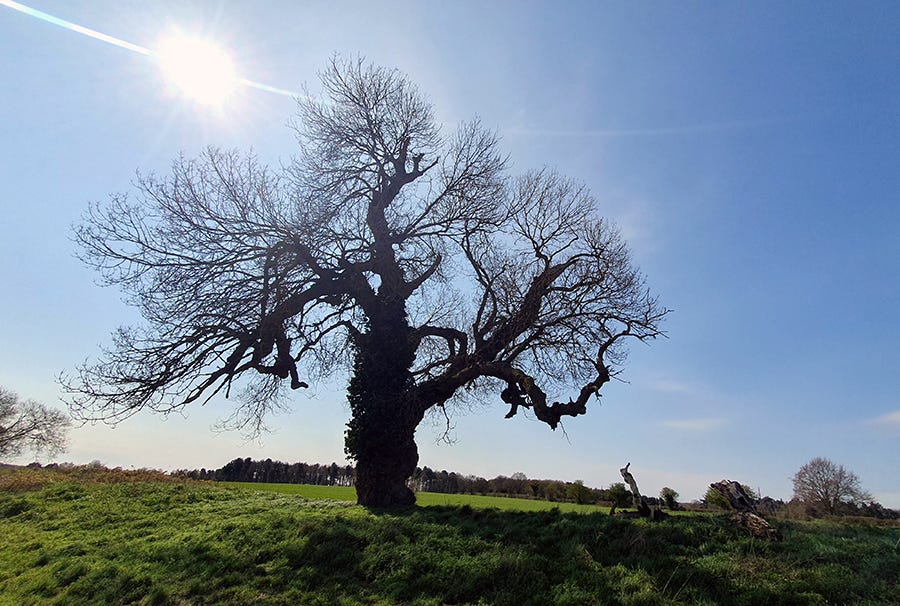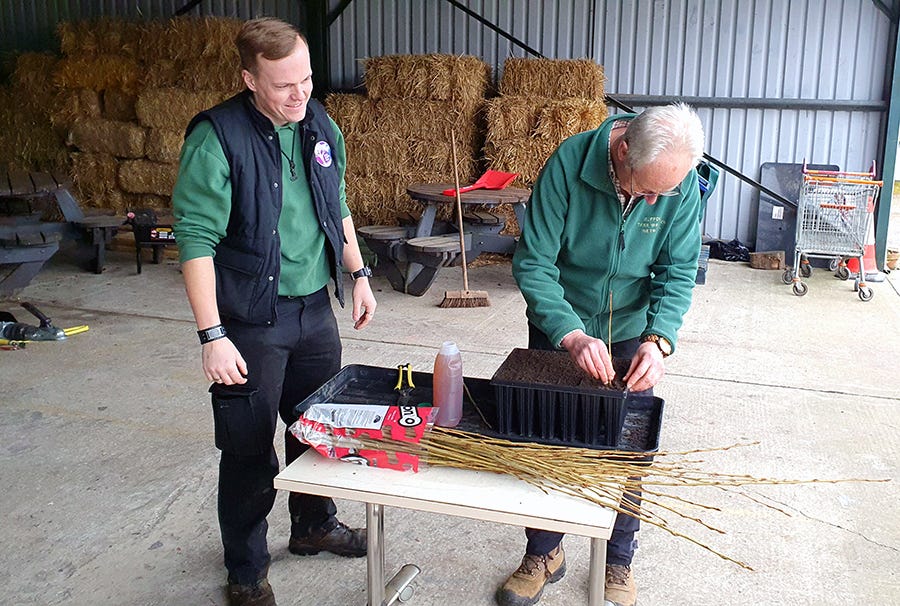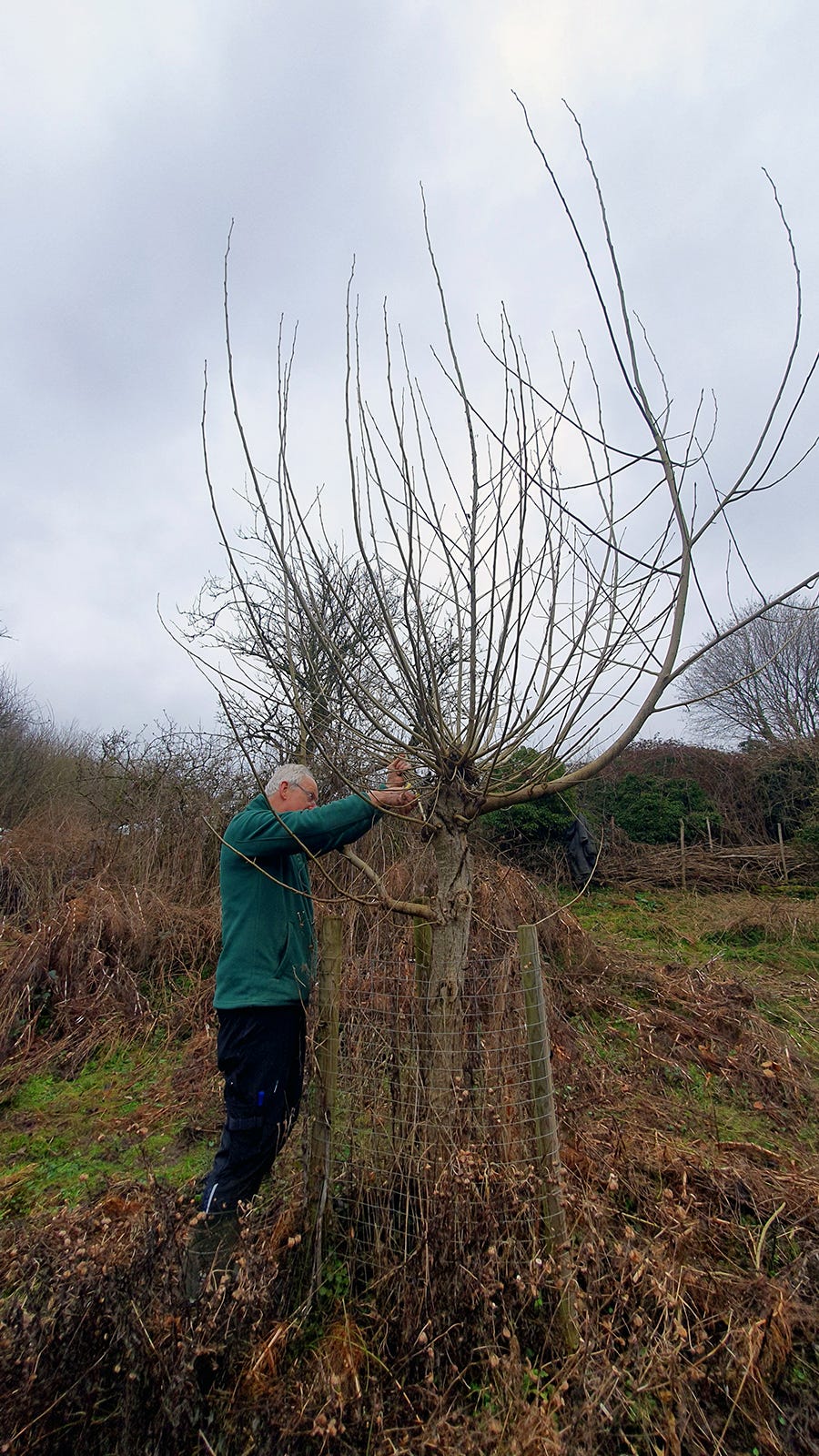
The Native Black Poplar (NBP) holds a magnetic attraction for me – in large part because of its rarity, which arises because it almost never reproduces either from seed (combined with a high risk of hybridization with other poplars) or from wind-blown branches self-rooting in wetland sites, due to today’s intensively farmed landscape. This means that the survival of the species is heavily dependent on human intervention.
There is also no doubt that mature NBPs have a unique ‘architectural’ beauty with their characteristic ‘lean’, arching lower branches and bark formations; and they have historical significance in the East Anglian landscape.
These were the motivations for re-launching the Suffolk Tree Warden Network (STWN) NBP project three years ago.
What appears to be a relatively strong (but still small) and age-diverse population in Suffolk exists in large part be due to the hard work of many people since the NBP was championed by Edgar Milne-Redhead in the 1970s and 1980s, not least by the tree’s County Recorder, Sue Hooton. Thanks to the diligent work of the Suffolk Biodiversity Information Service (SBIS), Suffolk also enjoys an extensive database of its NBP population (unlike its neighbours Norfolk and Essex).

I have set the objectives of the Suffolk Project –
to assist in the management and development of the two existing Suffolk clone banks
to propagate an annual planting stock (evenly distributed between male and female clones) via cuttings from clone trees at a newly-established Suffolk nursery
to distribute saplings via the STWN, environmental groups and the Suffolk AONBs to a wide variety of landowners across Suffolk
to update the SBIS database by surveying known trees, recording newly-discovered trees, and recording all newly-planted saplings with 10 digit grid references.
The recording of all newly-planted saplings is not a glamorous task, as it requires rigorous traceability right from taking the cuttings, though the growing and distribution stages, to planting and record submission by landowners to me, for logging on to the SBIS database.
However, I believe that this is a critical part of the project, and has a dual benefit – enabling future generations to identify the location of specific clone trees if needed for propagation or research purposes; and preventing the need for accurate identification/DNA testing of the trees by future surveyors. This process involves a lot of care and admin, but is fundamental to the success of the project: in an ideal world, the location and clone number of all Suffolk NBPs will eventually be recorded.
Over 130 saplings (50% male, 50% female) were distributed during the winter of 2022-23, and approximately 270 saplings in 2023-24. It is planned to produce over 400 saplings for the 2024-25 planting season.
Ben Potterton of The Otter Trust began a similar project for Norfolk at much the same time, and we have developed a close working relationship, sharing knowledge and nursery stock, as well as swapping clones the other county does not have. We have also created an East Anglian NBP project, by cooperating with a burgeoning Essex County Council-led initiative, which is in its early days but has great potential to further expand and diversify populations across the region.
NBP saplings were previously grown in a field-based bare root nursery, with cuttings pushed into the ground through slits in weed suppressant fabric. Given NBP cuttings tend to develop long roots very quickly once they strike, this allows unrestricted root development; but also requires significant manpower in cultivation and management, carries an increased risk of weed and drought problems; and can result in significant root loss when saplings are transplanted.
I have therefore decided to grow saplings in containers, which facilitates management and movement to the plant site, but does result in some restriction in root growth. For this reason, cuttings are planted out in Year One.
In the summer of 2023, I had the opportunity to participate in a Europe-wide project to map Black Poplar genomics, funded by the University of Udine, Italy, with testing conducted by Professor Michele Morgante who has developed a whole genome SNP (Single-Nucleotide Polymorphisms) survey method to create a database of continental European populations, to which UK populations can be compared.
Samples from Suffolk clones were submitted to the project, and I hope this will in time lead to much greater knowledge of the East Anglian NBP population and its relationship to continental European populations.

The Suffolk NBP project is at an exciting stage. The survey programme of Suffolk trees will continue in order to bring the SBIS database as far up to date as possible. However, surveying is currently entirely reliant on volunteers, as is much of the nursery propagation project. Securing core funding to support the project’s key objectives would accelerate its already significant achievements.
David Appleton is Suffolk Black Poplar Project Leader and a Tree Warden with Suffolk Tree Warden Network. Find out more about The Tree Council’s Tree Warden programme, by visiting www.treecouncil.org.uk/tree-wardens/
David is nominated for a Green Suffolk Green Hero Award for his NBP work. The winner will be announced on March 27.
With additional thanks to Emma Black and volunteers, Dedham Vale AONB; Liam Judd and volunteers, Nowton Park; Ben Potterton of the Otter Trust; and Suffolk Tree Wardens and other survey volunteers who have supported the project.




A Great article.
David is doing a fantastic job to raise cuttings with volunteers, and also to get them planted and recorded n the Suffolk landscape. Keep up the great work and hopefully future generations of people will see mature ancient native black poplars in Suffolk.